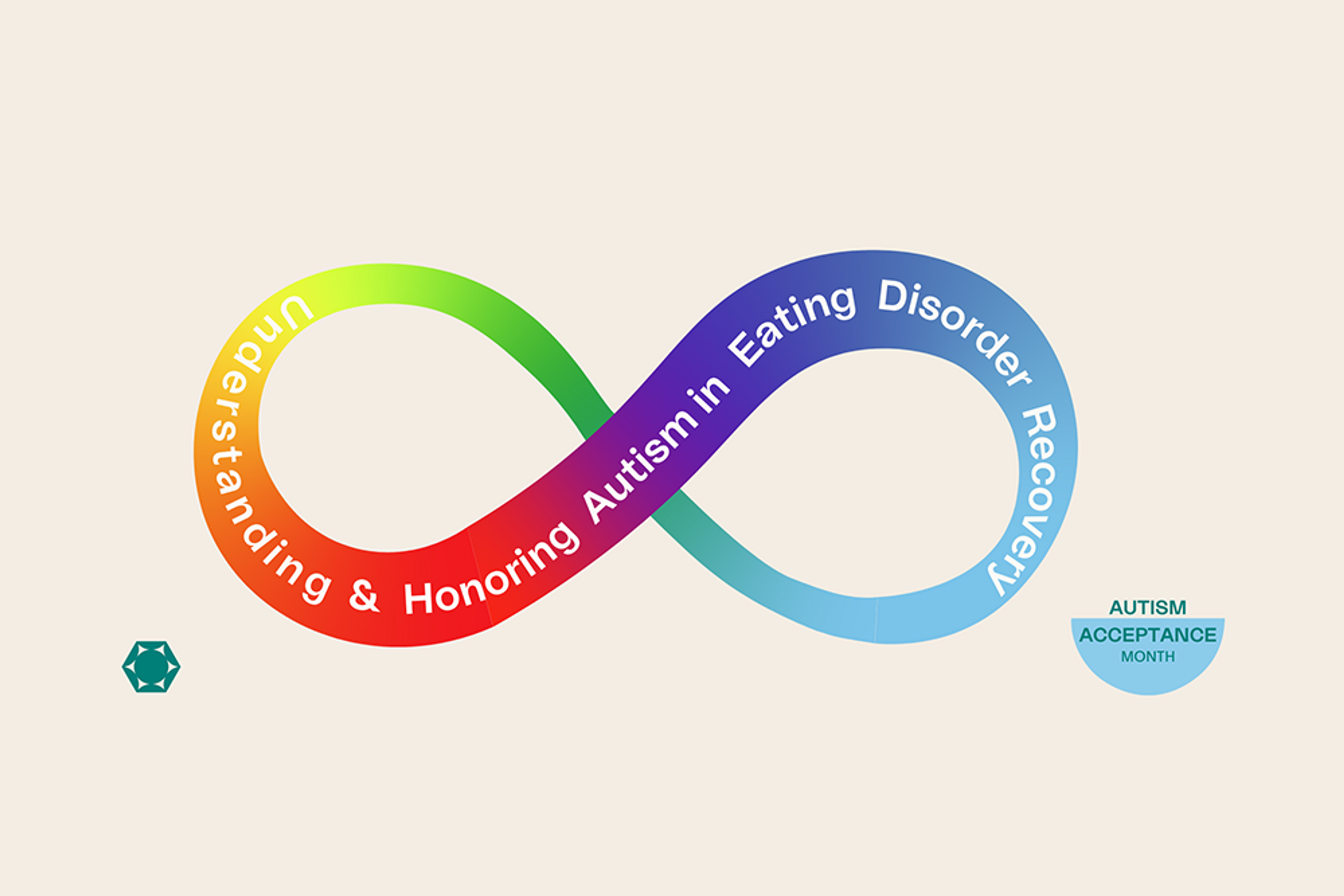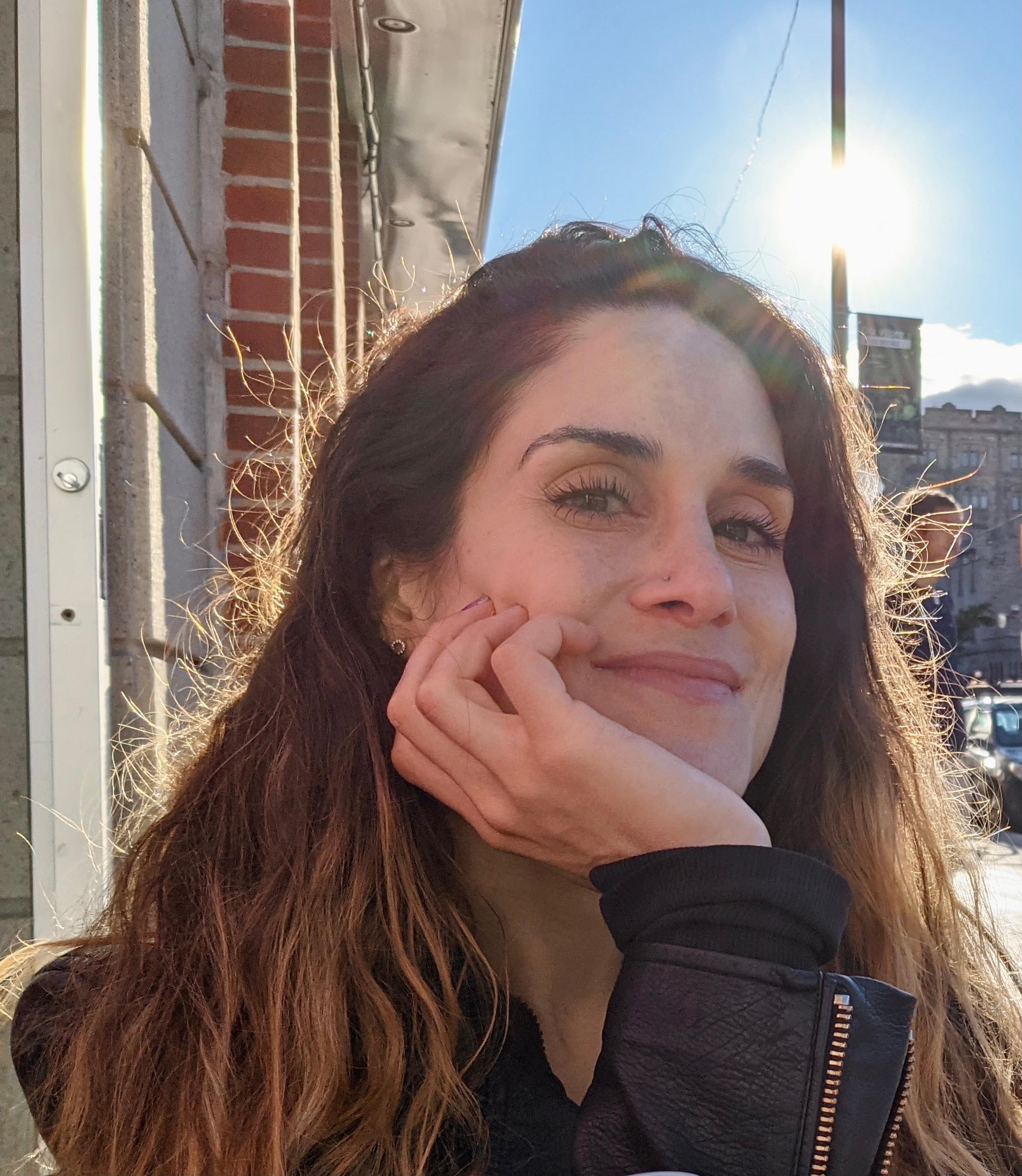
We know that eating disorders often come with co-occurring conditions, like anxiety, depression, ADHD, or OCD. But what's talked about less is the connection between eating disorders and autism—and understanding this connection is essential for getting the right support to every person with autism who struggles with an eating disorder.
Equip Peer Mentor Zaynah Mahon says she spent most of her life not understanding why school, social events, and everyday stimuli were so overwhelming. “I felt incredibly different from everyone else,” she says.
It wasn’t until Mahon was diagnosed with autism in her mid-twenties that some of the immense struggles of her younger years began to make sense. “Because of my ability to mask my autistic traits, I looked like every other teenage girl on the outside,” she says. “I was second in my high school class, I had a group of friends, and I always put on a smile, even while overwhelmed.”
Before Mahon received an official autism diagnosis, she realized she had another serious challenge to contend with in the form of an eating disorder. “Recovery has been challenging because I am a rule-bound person,” she says. “Once I started letting go of ‘food rules,’ I created my own set of ‘recovery rules.’ Because black-and-white thinking is a huge part of the way my brain works, I started to tell myself things like ‘I'm only in recovery if…’ or ‘recovered people don't ever miss meals or always listen to their bodies.’ This type of thinking was and still is quite frustrating because it puts my recovery in a box, when in reality, my recovery will change as I get older. I often have to ask myself, ‘Is this autism or a past eating disorder thought?’”
Mahon has worked hard to honor her autism and eating disorder recovery at the same time, and she has been successful. But her experience speaks to the often overlooked and complex interplay of neurodiversity (i.e. the wide spectrum of ways people think, learn, and act due to different ways that people’s brains work), autism, and eating disorders.
Understanding the link between autism and eating disorders
According to the Autistic Self Advocacy Network, a nonprofit organization run by and for autistic people, Autism Spectrum Disorder (ASD), is “a developmental disability that affects how we experience the world around us. Autistic people are an important part of the world. Autism is a normal part of life, and makes us who we are.”
ASD can include everything from Asperger's Syndrome and Pervasive Developmental Disorder – Not Otherwise Specified [PDD-NOS]), and the experience of living with autism can be different for each person, which is why it’s considered a spectrum condition. Just like eating disorders, there is no single cause of autism, and receiving the right diagnosis and configuring appropriate, individualized treatment may require a multi-pronged approach.
“It's so complicated,” says Equip peer mentor Alexander Thixton. “Being autistic in recovery from anorexia, especially when I spent the majority of that time not knowing I was autistic, I dealt with some unique challenges.” For Thixton, some of those challenges included the stress of routine changes which can lead to “autistic burnout,” i.e. chronic exhaustion, loss of skills, and lowered tolerance for stimuli. But recovery also led to some interesting realizations (“like the fact that diet culture was definitely part of masking for me”) and some unexpected advantages (“like being so drawn to routines and structure that, once I was sold on recovery, I had my own little recovery whiteboard to keep track of progress”).
About 1 in 44 children have ASD, and while boys are four times more likely than girls to be diagnosed with autism, people of all racial, ethnic, and socioeconomic groups can be affected. The disparity among boys and girls may even be misleading, according to newer research that indicates classic diagnostic methods may miss the signs of autism in girls, which can be more subtle or less typical than those in boys. Studies have shown that about 70% of young people with ASD present with at least one co-occurring disorder and research indicates there does seem to be an elevated risk of anorexia in autistic women, specifically.
Equip therapist Carly Knauf, PsyD, who has worked with ASD individuals for over 14 years in a variety of settings including Ascendigo Autism Services and the nonprofit, REVEL. “Over the years I have worked with amazing individuals on the spectrum who have often been overlooked, misdiagnosed, or misunderstood. Understanding the uniqueness of each person along with their specific concerns, needs, and struggles is vital when supporting them on their journey towards success and recovery. I believe that clients are experts on themselves and therapy is most effective when it’s collaborative and strength-based,” she says.
While Equip peer mentor Kelsey Gilchriest has not been diagnosed with ASD, she says being neurodivergent has impacted her eating disorder recovery in specific, nuanced ways. “My nervous system is more sensitive than most; when I become dysregulated, it impacts many areas of my life, including eating and my appetite,” she says. “I have learned that I have to take extra steps to maintain recovery, and that for me, my recovery may look different due to my neurodivergence.”
Equip Vice President of Program Development, Jessie Menzel, says she commonly sees ASD and neurodivergence within the context of eating disorders, and has observed many points of overlap in the conditions. “There are many traits that overlap between restrictive eating disorders and autism, like rigid, inflexible thinking, intolerance of uncertainty, sensory sensitivity, social difficulties, and poor interoceptive awareness,” she says. “The increased rigidity and inflexibility of thinking, in particular, can often make changing eating behaviors more difficult.”
How autism and neurodivergence can impact eating disorder recovery
Gilchriest says that her experience as a neurodivergent person made eating disorder recovery particularly challenging because of the expectations she had for her physical and mental progress. “I remember being so frustrated with my body for not responding ‘normally’ to things others seem to have no trouble with, or having to do things to regulate my body that others didn't have to,” she says. “I had to learn that it's not my body's fault for needing these things; it's just existing in a culture where productivity and pushing through pain and exhaustion are valued over resting and soothing our bodies. “I wish more people knew that neurodivergent folks need to operate in the world differently than others, and that there is nothing wrong with that.”
Knauf says that after years of working at the intersection of autism and eating disorder recovery, she has a three-fold wish for the future of treatment: 1) to expand the general population’s knowledge of autism, neurodivergent minds, and eating disorders, 2) to make individual lived experiences more mainstream (like the writing of author Jennifer Cook), and 3) to update public education and research on mental health concerns and eating disorders.
“An estimated 46-89% of children with autism have feeding problems, so we know there is a need for more support, services, and understanding,” she says. “Research is lacking in this developing area and clients deserve a better understanding of the intersectionality of ASD and eating disorders so we can continue to establish best practices and provide invaluable resources.”
Menzel says it’s essential for autistic patients and their families to know that recovery from an eating disorder is possible. “For parents and patients alike, use your knowledge of autistic traits to guide your approach to recovery,” she says. “Things like a desire for routine or predictability may indicate that structured mealtimes and a pre-planned menu may be helpful. Don't be afraid to advocate for yourself or your child and make sure that your autistic traits are part of your plan for recovery.”
As for Mahon, she wishes for individuals with any form of neurodivergence or ASD, as well as their families, to learn to celebrate their uniqueness. “My advice would be to radically accept the cool, quirky, awesome person that you are or your loved one is,” she says. “You are who you are and you don't owe the world ‘normal.’ After I accepted this, I was able to really settle into my recovery. Making a Venn diagram of the traits you have and your eating disorder behaviors might be helpful in figuring out where things overlap. Taking time to use your favorite fidgets, engage in your special interests, or spending time snuggled with a weighted blanket can all be ways to honor your autistic self and use skills against the eating disorder.”
*Note: this article uses both identity-first and person-first language when referring to patients part of the autism community at Equip. However, at Equip, when working with patients, we are always proactive to determine what language the patient themselves prefers. If a patient prefers person-first language then Equip providers accommodate that request, and the same in regards to identity-first language.








